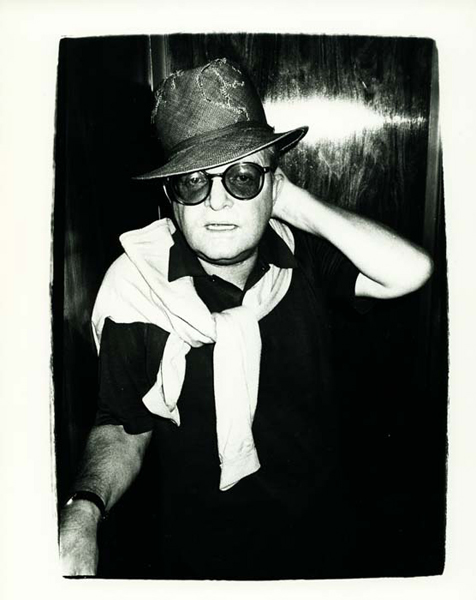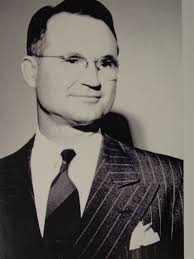Sunday, November 8, 2009
A True Story ?: Journalistic versus Novelistic Techniques
In Cold Blood bills itself as a "true account" of the Clutter murders. Is it? How is it close to the practice of journalism and how does it depart from it? What literary techniques does it use? Do these techniques make the story more or less real?
Subscribe to:
Post Comments (Atom)



The fact that In Cold Blood is a "true account" gives it similarity to journalism, seeing as journalism attempts to report the truth. In Cold Blood does report facts about the murders and the murderers, but does not simply tell what happened. In a way In Cold Blood shows you what happened to the Clutters, and what happened to Dick and Perry. Showing the story of Dick and Perry after they commit the murder, but also flashing back through Dick and Perry's lives and how they collide with the Clutters demonstrates a very novelistic technique. The point of this technique would be to show the characters in a more personal view, showing who they are as people. This is something that would be left out in journalism. Another novelistic characteristic of In Cold Blood would be its approach to dialogue in the story. Interviews with the people written about in the book would most likely not reveal such in depth conversations. Many of the minor details of the story were also most likely made up as well, due to the fact that they would most likely not be remembered by those interviewed for the story. In journalism, these details would be left out entirely, and dialogue would be replaced with interviews with the respected characters. These techniques help to make the book more of a story, and easier to read.
ReplyDeleteIn Cold Blood is a “true account” of the murder of the Clutter’s to some degree. It answers the six questions; who, what, when, where, why, and how? Truman Capote supplies the reader with facts that respond to these questions. For example, the Clutter’s are killed by Dick and Perry, in Holcomb, Kansas. Later in the book will describe why and how. Seen from this view, In Cold Blood is a true account of the murder. However, there are things that the reader cannot tell if they really happened or not. The reader is not sure if certain things that Dick and Perry did took place. Such as if the two men killed the dog, or what they spoke to one another. In a way it is close to the practice of journalism because it provides the facts, although it adds details and other information that would not be found in journalism. Such as the motive or specific details about the characters. Additionally, journalism tends to reports the bad things rather than the good things. This book is based on a murder, and therefore it is reporting a rather terrible story. Nonetheless, when one reads any form of journalism, they assume that what they are reading is fact and one hundred percent true. In Cold Blood, as stated above, leaves the reader questioning what fact is and what fiction is. Truman Capote also uses several literary devices, such as dramatic irony, dialogue, exposition, foreshadowing and symbolism. Dramatic irony is seen in the beginning of the story where the reader knows the Clutter’s are about to die, but they themselves do not understand this. There is also dialogue between the characters (although some quotes are used) and an exposition which provides detailed background information. Symbolism runs throughout this story like in Perry’s dream. The symbolism and dramatic irony make the story less real. The symbolism makes it seem like the author is changing tiny aspects of the story in order to portray a more important message. Also, because it isn’t quoted, the reader is not sure about the exact dialogue and therefore it makes the story less real as well. In order to portray the characters well, the author must insert actions that demonstrate this and these actions could be false.
ReplyDeleteIn Cold Blood isn’t quite a journalistic take on the account of the Clutter murders, however the difficult thing is separating known fact from the writing decisions of Capote. While it is extremely likely that Capote kept the story completely factual, it has a novelistic perspective on it. Capote gives background information, creates sympathy, and has an emphasis on plot. Journalism is a factual based form of writing in which there are only quotations and direct facts with no hint toward a bias. The details, feelings, and dreams of Dick and Perry are the main questionable passages. While the tale of the Clutters in the first part has a novel perspective, most things are not assumptions, but rather parts of people’s depositions and facts received from the police reports. This approach of writing used by Capote makes the story both more real and less real. While it adds a certain element of realness in that we can experience the story first-hand due to the added personal connections, it also does the opposite. By straying from the typical style of journalism when reporting facts, it makes it seem as though Capote inserts his own bias and opinions on what he thinks to have happens, as opposed to merely what he knows.
ReplyDeleteI feel that In Cold Blood is a good combination of both, a story coming from a journalistic point of view and a well written novel. As it is stated on the back of the book it is a "true account" of the clutter murders, which i believe is true, to a certain extent. There are obviously occasions though out the book that are fictional, where Capote is simply filling in the detail that was unavailable from the journalistic end. Since much of the story is the assumptions from Capote's views and research it leaves the reader questioning the accuracy and truth behind what he writes. I feel like if the auther were to have left the story purley journalistic or purley novelistic it would have been a more convincing novel. Using the two different techniques makes the reader questoin the reality and adds a sense of confusion. It pushes the story to loose reality because being that it was written by a single auther who gathered information, suggests that there is some biast in the story and some faulty information.
ReplyDeleteI would argue that, while the overall story is most likely true, the small details are probably fictionalized. The style that it is written does not resemble journalism at all. It is written like a novel, and it took me until the end of part 1 to realize that it was a true story. It is still hard to believe that the detailed dialogue is perfectly accurate. No piece of journalism would ever use a quote that was an approximation of what someone said. Similarly, details that are not perfectly accurate or are not essential to the main focus of the article are left out. There are certain points in the novel where Capote even hints that his information is vague. The man who drives Dick and Perry out of Mexico is labeled using a created name by the author, "He shall here be known here as Mr. Bell". This is a quality that journalism does not have. The depth of quotes is also unbelievably specific, and the dialogue that occurs between characters is drawn out. Dialogue is not often used in journalism, and quotes are typically shorter. Capote must have approximated some of the quotes in order to fill gaps in some conversations.
ReplyDeleteThis story is certainly a “true account,” because the story happened and last week was the fiftieth anniversary of the murders. However, it is impossible to know every small detail of what was said or thought by the characters involved in the story. Journalism reports what has happened in little detail. Journalists do not deal in forecasting what will happen, they report the facts. The story, though, is a better novel because Capote leads the reader with glimpses of what will or may happen. One such example of a literary technique that makes the story more interesting is in the account of Dick and Perry’s ride with the so called Mr. Bell, where the reader has a forecast of Mr. Bells strangulation with a belt. “Later, along some quiet side road, use would be made of the belt with the sky blue beads.” (173) Actually, Mr. Bell was not strangled with a belt, nor is his real name Mr. Bell. So, Capote has taken some literary freedom to make the story more interesting, even if it is not always accurate.
ReplyDeleteThe story, really holds the reader, but does not seem as real as a journalists account may seem. The dialogue is much too detailed to be accurate. Even the thoughts and feelings of the main characters are described. Capote certainly could not have known all of these details. Police interrogations, are recorded, so are court room trials, but all the time leading up to the capture of Dick and Perry must be partly fictional. However, because the story is told as live action and not as a historical report, it seems real.